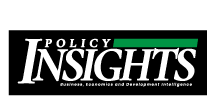Issue 25
October 2025
Bangladesh’s recent economic experience underscores a central challenge of development—achieving sustained growth without compromising stability. This issue of the magazine, themed Promoting Growth with Stability, brings together four critical perspectives on how Bangladesh can consolidate recent macroeconomic gains while addressing deep structural weaknesses.
The first article explores the restoration of stability in the balance of payments. Following years of external shocks and policy missteps, the IMF-supported reform program has helped rebuild reserves through exchange rate flexibility, interest rate liberalization, and fiscal restraint. Yet, with growth slowing to 4 percent and much of the adjustment driven by import compression, questions arise about the durability of this recovery. The analysis argues that long-term stability must rest on export diversification, sustained remittance flows, and an improved investment climate that attracts foreign capital and supports competitiveness.
The second piece examines the ongoing effort to restore stability in the banking sector—a prerequisite for durable growth. Despite some progress in regulation and liquidity management, non-performing loans have reached crisis proportions, reflecting decades of weak governance and political interference. The article calls for comprehensive reforms, including restructuring state-owned banks, strengthening supervision, and introducing stronger crisis-prevention tools. Restoring public confidence in the financial system will require not only technical measures but also political will and institutional accountability.
The third contribution addresses Bangladesh’s fiscal paradox: persistently low tax effort alongside high tax expenditures. With exemptions and concessions consuming nearly half of total tax revenue, the country’s ability to finance infrastructure and social investment remains severely constrained. The authors propose capping tax expenditures, establishing independent oversight, and linking incentives to measurable improvements in compliance. Strengthening revenue mobilization is essential to sustaining macroeconomic stability and supporting inclusive growth.
The final article turns to Bangladesh’s urbanization pattern—once a driver of transformation, now increasingly a source of constraint. The overconcentration of activity in Dhaka, coupled with underdeveloped secondary cities, has led to congestion, rising costs, and declining productivity. The analysis warns that without decisive reforms in urban planning, governance, and infrastructure, Bangladesh risks entrenching a low-productivity, unequal urban model that undermines its growth prospects.
Taken together, these reflections reveal a common thread: stability cannot be imposed by short-term restraint alone—it must be built through strong institutions, credible reforms, and efficient resource allocation. Bangladesh’s next phase of development demands policies that are both disciplined and forward-looking, ensuring that growth and stability reinforce, rather than constrain, each other.


